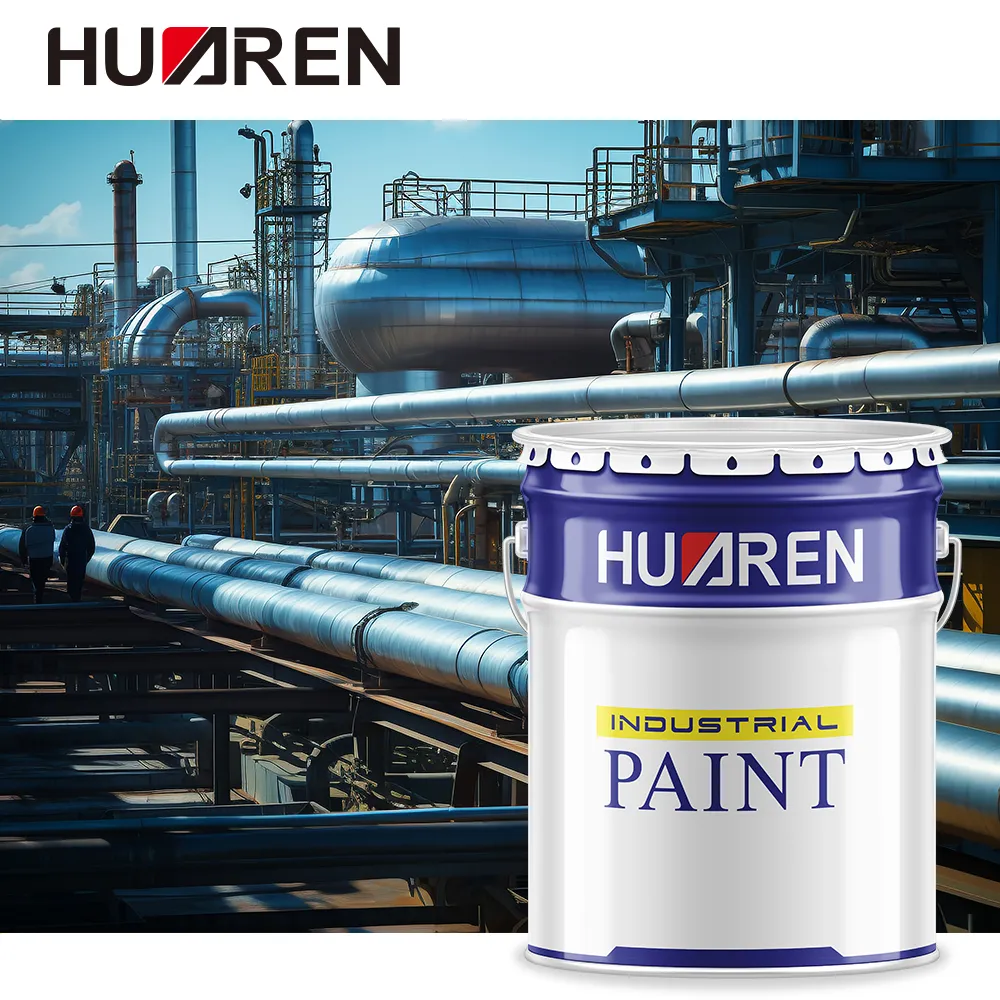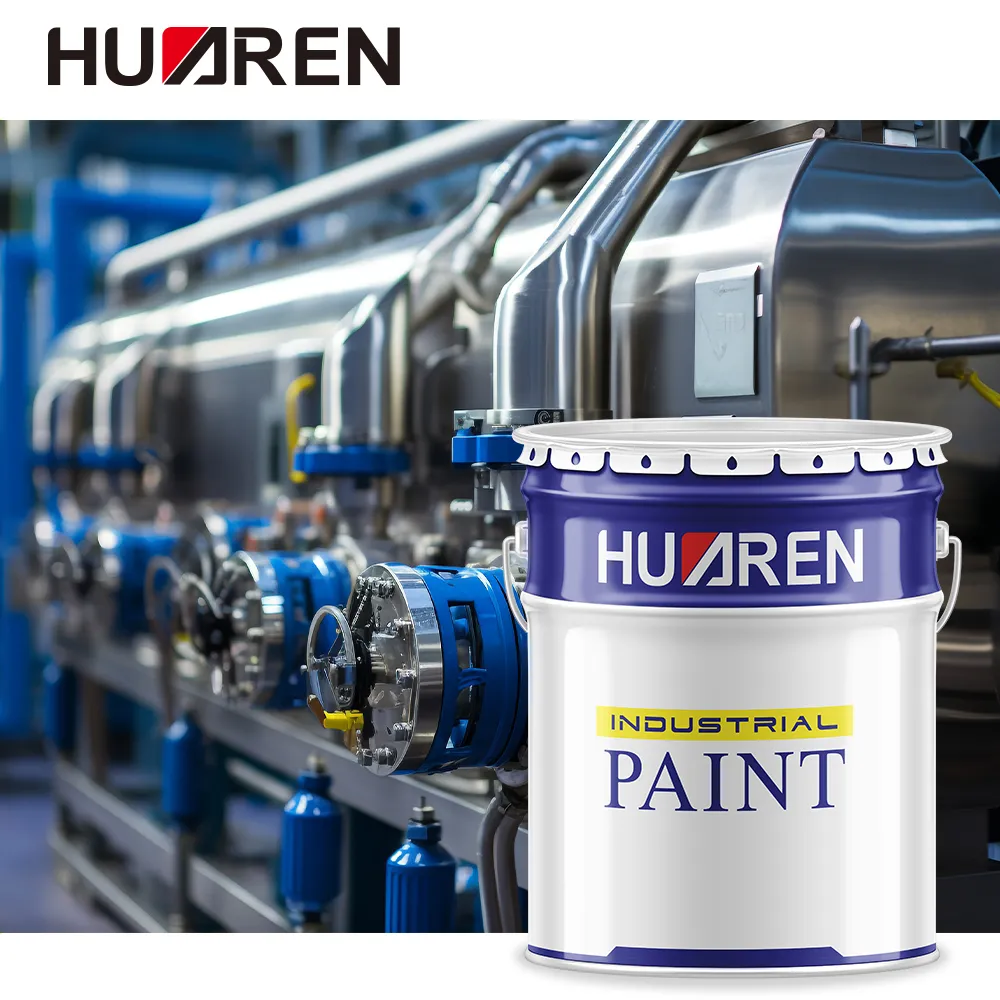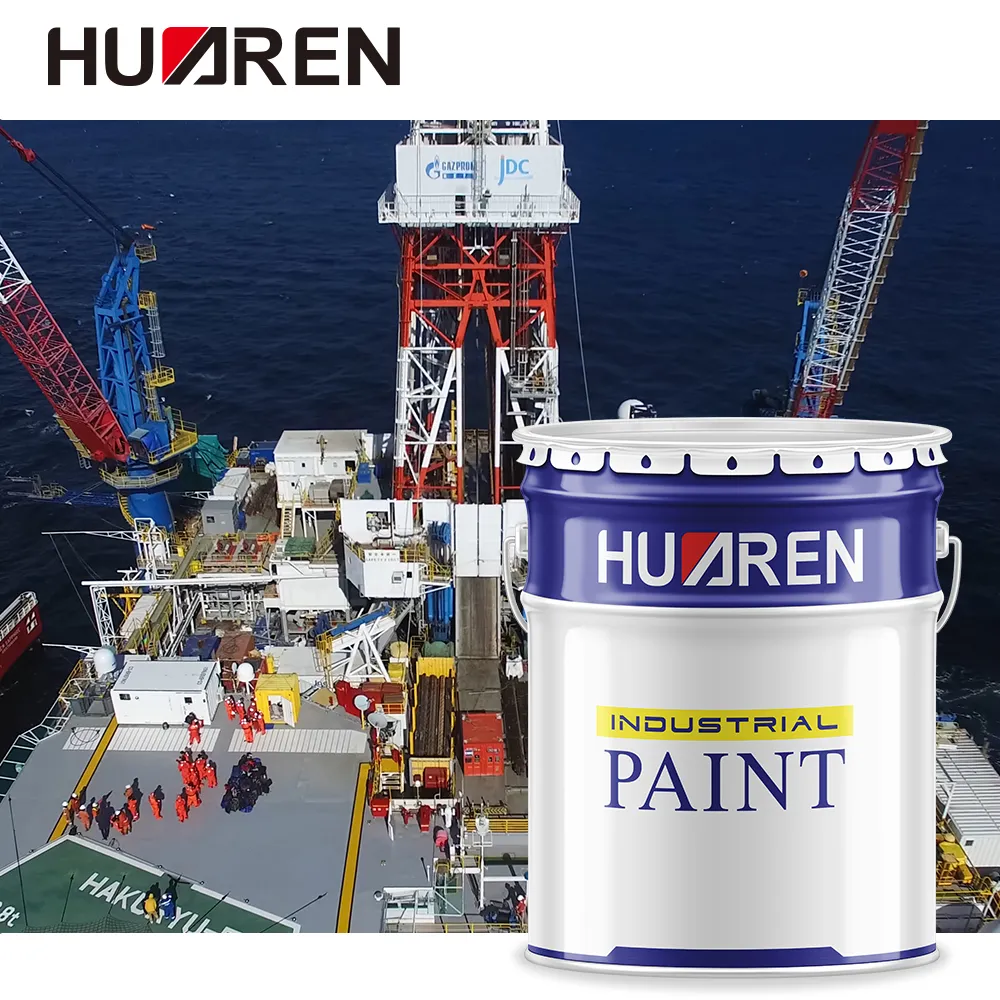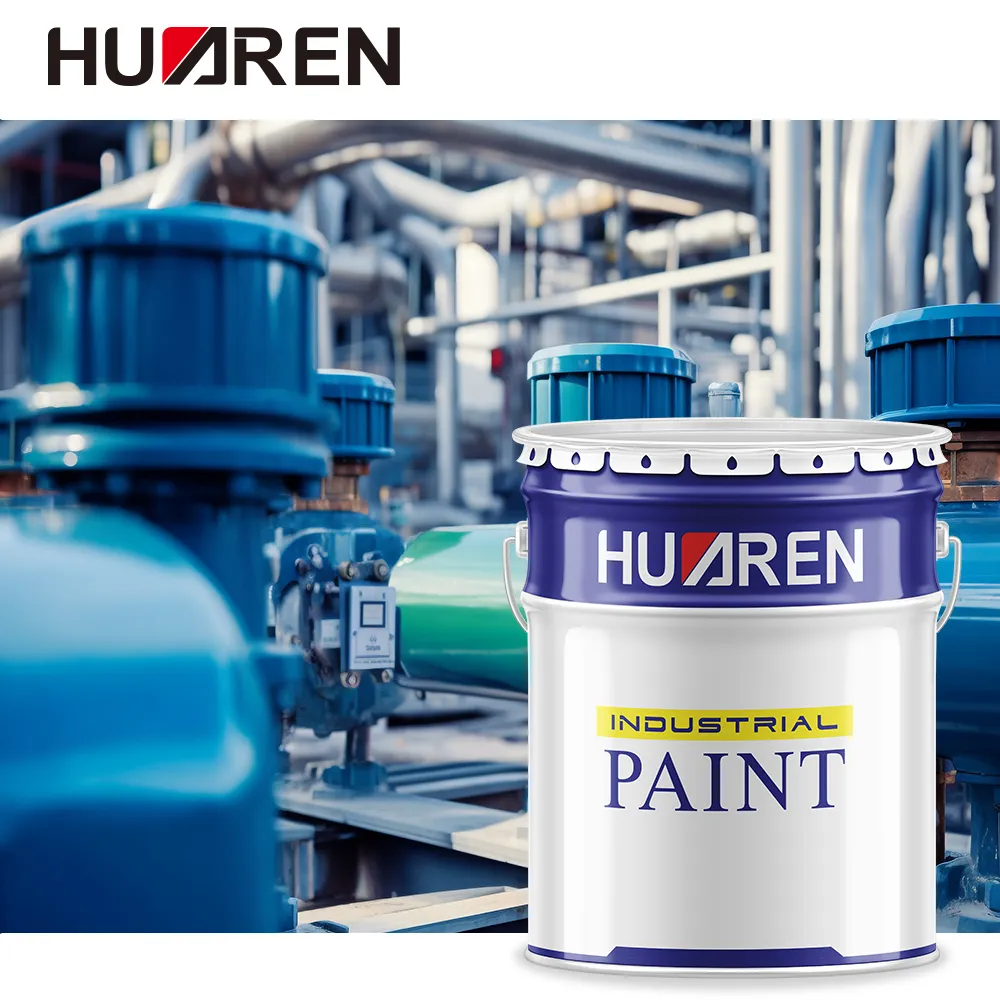In industrial production and daily life, the role of paint is not limited to protection and decoration, but in many cases it also needs to have special functions. High temperature paint is such a paint that is designed to withstand extremely high temperatures and can maintain its physical and chemical properties in extreme thermal environments. Whether in the steel industry, petrochemical industry, or in the automotive manufacturing and construction fields, the heat resistance of high heat paint is crucial.
This news will analyze in detail the definition, temperature resistance range, main types, application areas, and factors affecting the heat resistance of high temperature paint to help readers understand the core functions of high temperature paint and its usage scenarios.

What is high temperature paint?
High temperature paint is a paint specially used in high temperature environments. It is characterized by its ability to maintain stable adhesion, color and protective properties at high temperatures without cracking, peeling or discoloration. Compared with ordinary paints, high heat paint contains special heat-resistant resins and high-temperature-resistant pigments, which enable it to withstand extreme thermal environments.
High temperature paint is usually used for equipment and surfaces exposed to high temperature environments, such as industrial furnaces, chimneys, engines, exhaust pipes, etc. Its main purpose is to provide corrosion protection and extend the service life of equipment while avoiding damage to the surface of materials caused by high temperatures.
What are the ingredients of high temperature paint?
The main ingredients of high temperature paint include resins, high temperature resistant pigments, fillers and solvents. In order to achieve high temperature resistance, these ingredients must have the following characteristics:
● High temperature resistant resins: Common types of resins include silicone resins, epoxy resins and acrylic resins. Among them, silicone resins are widely used due to their excellent stability at high temperatures. They can maintain good adhesion and durability at high temperatures.
● High temperature resistant pigments: Pigments used to give paint color and hiding power must be able to withstand high temperatures without decomposition or discoloration. Inorganic pigments such as red iron oxide, aluminum oxide and titanium oxide are usually used. These pigments can maintain stable color and performance at high temperatures.
● Fillers and additives: Fillers and additives in high temperature paint help improve the mechanical properties of the paint, such as hardness and wear resistance, and can also enhance the antioxidant capacity of the coating.

What is the temperature range of high temperature paint?
The highest temperature that high temperature paint can withstand
The temperature resistance of high temperature paint varies due to its composition and application scenarios. Generally speaking, the temperature resistance range of high temperature paint can be roughly divided into three categories: low temperature between 150°C and 250°C, medium temperature between 250°C and 600°C, and high temperature above 600°C.
● Low temperature level: The temperature resistance is between 150°C and 250°C. This type of paint is mainly used in kitchen equipment, household appliances and low-temperature industrial equipment, and is suitable for the more common medium and low temperature environments.
● Medium temperature level: The temperature resistance is between 250°C and 600°C. This type of paint is widely used in equipment such as boilers, ovens, exhaust pipes, etc., and is suitable for medium-intensity high temperature environments.
● High temperature level: The temperature resistance can reach more than 600°C, and can even withstand extreme high temperatures of up to 1200°C. This type of paint is usually used in facilities exposed to extremely high temperatures such as petrochemical equipment, metallurgical furnaces, chimneys, etc.
Differences in temperature resistance of different material surfaces
The temperature resistance of high heat paint is not only related to the composition of the paint itself, but also closely related to the material of the object being painted. The differences in temperature resistance of common materials are as follows:
● Metal surface: Metal materials, especially steel and aluminum, are widely used in high temperature environments. For these materials, choosing the right high temperature paint can not only protect their surfaces from oxidation and corrosion, but also withstand extremely high temperatures, such as 1200°C or even higher.
● Concrete surface: Although concrete is not a common high temperature environment material, some industrial facilities such as kilns or chimneys may use concrete structures. In these cases, high temperature paint can prevent the concrete surface from cracking and peeling at high temperatures.
● Wood surface: Wood has relatively poor high temperature resistance, so even if it is coated with high temperature paint, the use temperature needs to be limited to a lower range, usually not exceeding 150°C.
What are the factors that affect the temperature resistance of high temperature paint?
Resin type
The temperature resistance of high temperature paint depends largely on the type of resin used. Silicone resin is usually the main component of high temperature paint because it exhibits excellent thermal and chemical stability in high temperature environments. In contrast, other resins such as epoxy or acrylic resins may degrade at high temperatures, causing the coating to lose its original physical properties.
Pigment selection
The pigments used in high temperature paint must be able to withstand extreme heat without decomposition or discoloration. Inorganic pigments, such as red iron oxide and aluminum oxide, generally have good thermal stability and can maintain color at high temperatures. Organic pigments, on the other hand, may decompose or discolor at high temperatures, so they are rarely used in high heat paint.
Coating thickness
The coating thickness of high heat paint is also an important factor affecting its temperature resistance. Generally, thicker coatings provide better temperature protection, but if the coating is too thick, it may cause increased thermal stress inside the coating, resulting in cracks or peeling. Therefore, the coating thickness should be reasonably controlled during construction to ensure the durability and stability of the coating.
Application environment
The use environment of high temperature paint will also affect its temperature resistance. For example, in continuous high temperature environments such as industrial furnaces and exhaust pipes, the coating needs to have higher temperature resistance and oxidation resistance. In intermittent high temperature environments, such as automotive exhaust systems, the thermal cycling stability of the coating is also very important.

What are the application areas of high temperature paint?
Industrial equipment
High temperature paint is widely used in industrial equipment, especially in industries such as steel, petrochemicals and power generation. These equipment are often exposed to extremely high temperatures and need to face problems such as high temperature oxidation and corrosion. By using high temperature paint, the service life of the equipment can be effectively extended and equipment damage caused by high temperature can be reduced.
For example, the interior of high-temperature furnaces and boilers in steel mills need to be coated with high heat paint to prevent oxidation and corrosion of equipment under high temperature conditions. At the same time, these high heat paints can also improve the wear resistance of equipment and reduce wear.
Automotive industry
In the automotive industry, high heat paint is mainly used in high-temperature parts such as engines, exhaust systems and brake discs. Since these parts of the car need to withstand temperatures of up to hundreds of degrees Celsius, high temperature paint can provide excellent thermal stability to avoid deformation, cracking or coating peeling caused by high temperature.
Especially in the field of racing, the temperature of the engine and exhaust system is often extremely high, so more stringent requirements are placed on the heat resistance of high temperature paint. By using high heat paint with better temperature resistance, automotive parts can maintain good performance in high temperature environments.
Home and kitchen equipment
High temperature paint is also used in home and kitchen equipment, such as ovens, grills, heaters, etc. Although the temperature of these equipment is lower than that of industrial equipment, it is still necessary to apply a heat-resistant coating to prevent the surface of the equipment from discoloring, aging or peeling due to high temperature.
In addition, high heat paint is also often used for the surface treatment of equipment such as fireplaces and chimneys to provide beauty while ensuring long-term durability.
Construction and infrastructure
High temperature paint is mainly used in the construction field for surface protection in high-temperature areas, such as chimneys, pipes and kilns. These facilities may crack, corrode and other problems when exposed to high temperature environments for a long time. Using high temperature paint can not only extend the service life of buildings and infrastructure, but also reduce maintenance costs.

How to use high temperature paint correctly?
Surface preparation
Before applying high heat paint, it is very important to ensure that the surface is clean, free of grease and oxides. Especially for metal surfaces, it is recommended to sandblast or grind them first to improve the adhesion of the coating. The cleanliness and roughness of the surface directly affect the durability and protective properties of high heat paint.
Coating thickness control
Depending on the type of paint and the environment in which it is used, the coating thickness of high temperature paint needs to be properly controlled. It is usually recommended to apply multiple thin coats to avoid coating problems caused by applying too thick a coat at one time.
Drying and curing
The drying and curing time of high heat paint depends on the composition of the paint and the construction environment. Generally speaking, higher temperatures help the coating to dry and cure quickly, but too high a temperature may cause the coating to crack. Therefore, the construction temperature and humidity should be properly controlled according to the recommendations in the product manual.

